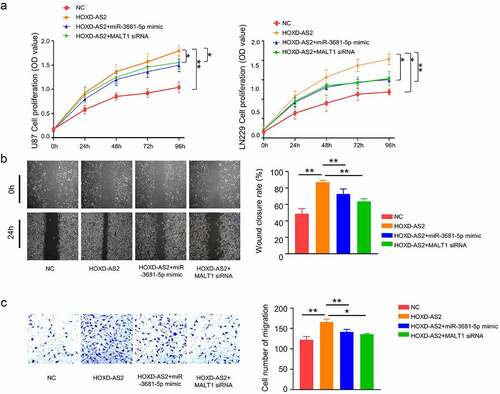Figures & data
Table 1. Correlation analysis between HOXD-AS2 expression and the clinical pathological parameters of GBM
Figure 1. LncRNA HOXD-AS2 expression is significantly up-regulated in GBM tissues and cell lines
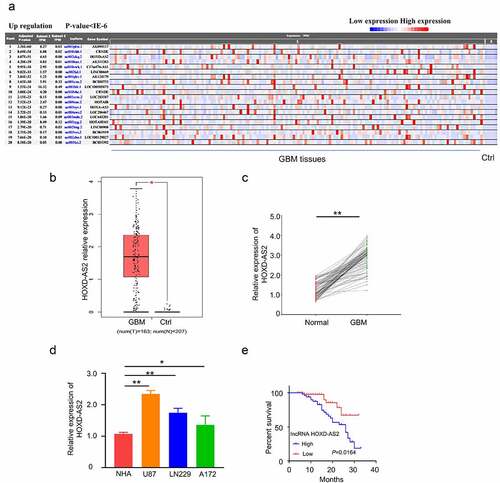
Figure 2. Knockdown of HOXD-AS2 inhibits GBM cell proliferation, migration and invasion, and promotes cell apoptosis
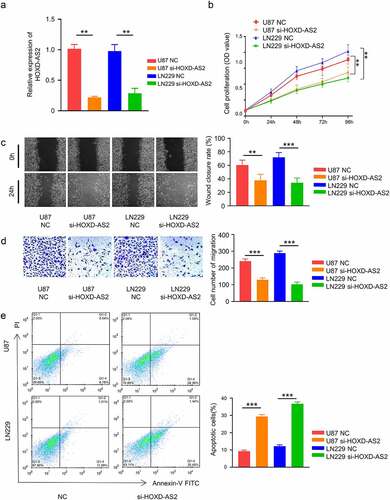
Figure 3. HOXD-AS2 acts as a sponge for miR-3681-5p
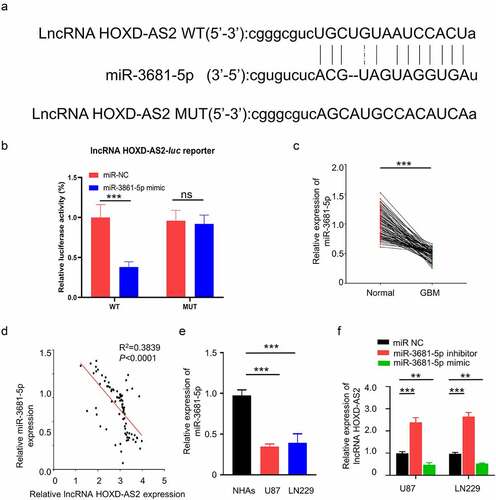
Figure 4. HOXD-AS2 maintains MALT1 expression via sponging miR-3681-5p
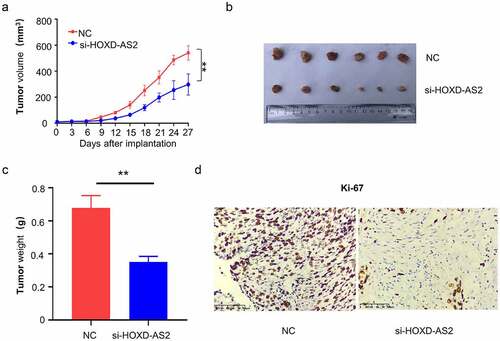
Figure 5. miR-3681-5p mimic or MALT1 knockdown attenuates aggressiveness in GBM cells
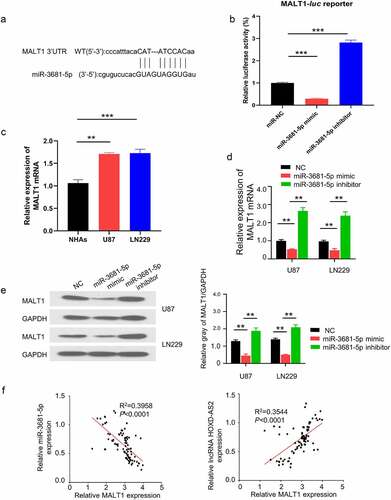
Figure 6. Downregulation of lncRNA HOXD-AS2 inhibits GBM tumor growth
